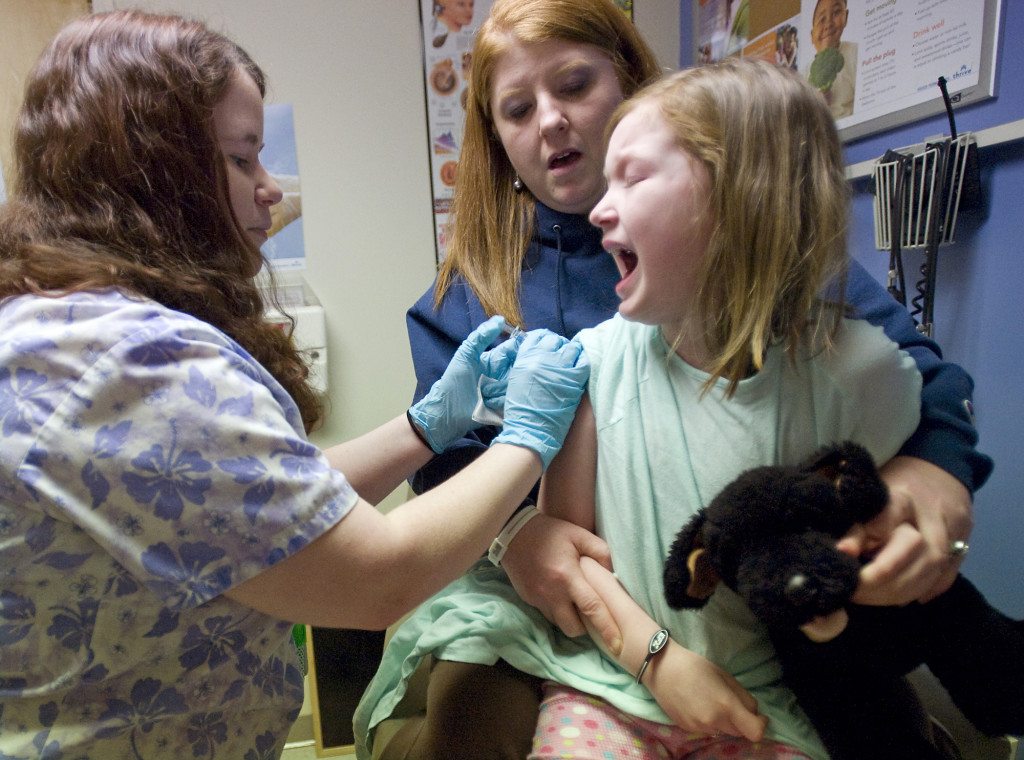Given the social isolation and mask wearing over the past two winters, you might have forgotten what a real influenza outbreak looks like. But rest assured — the virus has not forgotten about you.
This year is shaping up to be a harsh flu season, experts predict. Their methodology includes looking to the Southern Hemisphere, where Australia is seeing its worst influenza season in recent memory.
It’s the first time for such a surge since the COVID-19 pandemic began, government officials in that country said.
What happens there is often the best indicator of what will happen here and in the rest of the Northern Hemisphere, area health officials said Monday.
Susan Leathers, the safety, security and emergency preparedness manager for Providence St. Mary Medical Center, is already concerned for the Walla Walla Valley.
“Even though over the last two winters we had very, very minimal flu activity, the epidemiologists are reporting with their projections that we may have a significant flu outbreak based on what has already happened in the Southern Hemisphere, which is just coming out of one of the worst flu seasons they have seen in over five years.”
There have already been 230 reported out-of-season flu cases this year, said Elizabeth Bowen, Providence St. Mary’s infection preventionist.
“That is another thing that makes me think it will be a big influenza season — that unusual activity in late spring-early summer,” Leathers pointed out.
“The last time we saw that it preceded a big flu season, quite a few years ago.”
It’s too soon to have hard data about the 2022-2023 flu season, said Joseph Fiumara, director of Umatilla County Public Health, but he, too, has heard of a coming wave.
Before the advent of COVID-19, only about 40% of county residents got vaccinated against influenza. Now, however, his office is already seeing better turnout at flu shot clinics. That appears to be true across Oregon, Fiumara noted.
He suspects that over the course of the pandemic, people have come to depend on their local health departments to provide timely vaccines. This year, for the first time, his staff ordered a supply of the high-dose flu shots, recommended for people age 65 and over, and others in high risk categories.
Prior to now, Fiumara said, “We almost never had anyone coming to us for it.”
Oregon Health Authority has reported that around the state doses of flu vaccine are being used at a faster clip, and that’s good news, he added.
That wasn’t the case this past weekend when Providence and Walla Walla County’s Department of Community Health teamed up for the season’s first drive-thru flu shot clinic.
Out of 500 available doses, just 215 were dispersed, said hospital spokesperson, Kathleen Obenland.
Saturday brought the first hard rain of fall, she noted, and that is likely what kept people home during the usually well-attended event.
As well, people are getting vaccinated against the virus at their provider’s office and at pharmacies, Obenland said.
Fuimara noted the virus doesn’t typically show up in this corner of the globe until January and February, but it’s definitely here now.
“We’ve had this happen before. Sometimes you get a couple of waves of (flu) going through.”
Rates of visits to emergency departments for flu-like illness are still low at the moment, but have been increasing over the past three weeks. The silver lining, so far, is that what is showing up is Type A influenza, the more common strain, he said.
“The bad years tend to be Flu B and we don’t have that every year. Get your vaccination to negate that concern … Our weather is turning and being indoors is more conducive to spreading it.”
Hans Hoge, Northwest regional manager for the Albertsons Safeway grocery store chain, noted high flu activity is already being reported in some southern U.S. states.
Pharmacists with the company make it a point to cross talk to customers — if someone comes in for a COVID-19 vaccination, they are encouraged to get a flu shot, as well. And vice versa, Hoge said.
There is no anticipation of a vaccine shortage this year, he added.
In Columbia County, public health director Katie Roughten said her office has supported two vaccine clinics at Dayton General Hospital and done smaller events at group homes and in Waitsburg.
“We’ve administered more than 200 doses, at least. We’ve been hitting it hard.”
So far the virus has not shown up in Columbia County as far as she knows, Roughten said, but she knows people are more vulnerable this year.
Not only have the masks come off, but people are clamoring for social interaction, she said. And while COVID-19 is not on the front burner in the same way it has been, the pandemic has created a legacy of more stress and lowered immune systems.
That makes an ideal landing strip for other viruses, Roughten said, especially at a time few are eager to get yet another shot in the arm.
As well, she hears skepticism in the community; people here tend to not believe everything government health sources are saying at this point, the health director said.
“There are so many reasons why people just throw caution to the wind … And people’s faith and trust are strained.”



